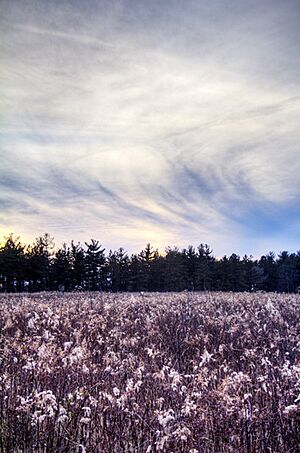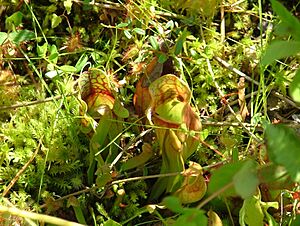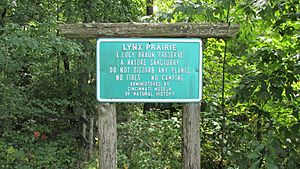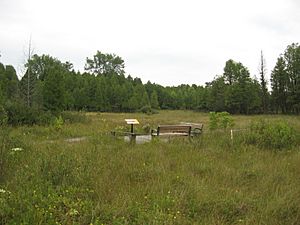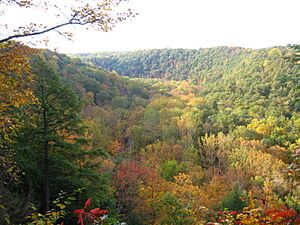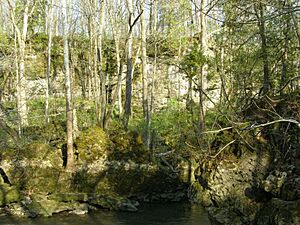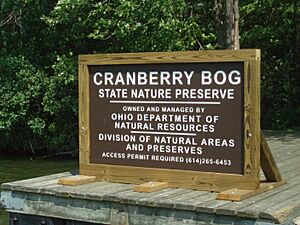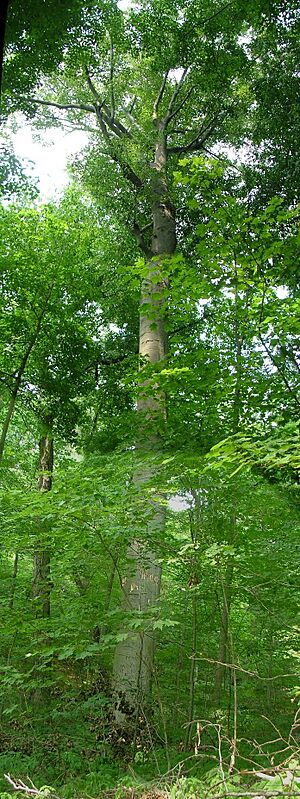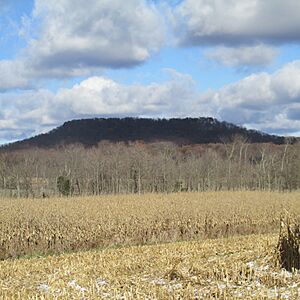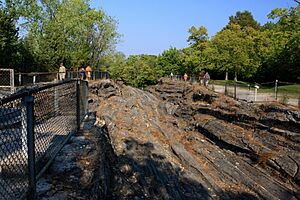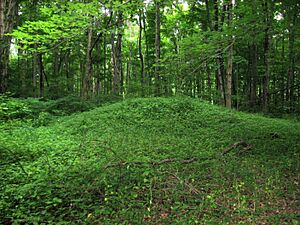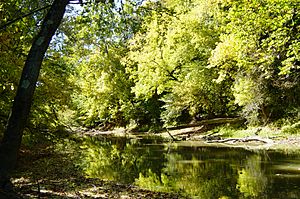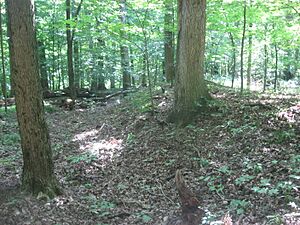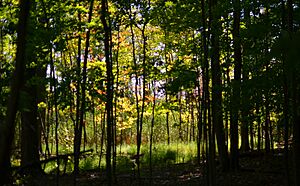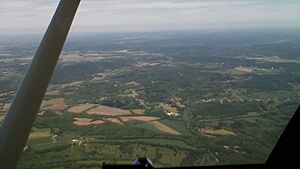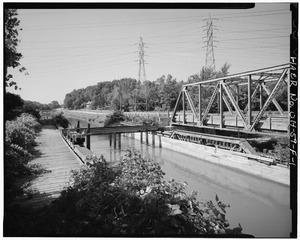List of National Natural Landmarks in Ohio facts for kids
Ohio is home to 23 amazing places called National Natural Landmarks. These are special natural areas recognized by the United States government. They are chosen because they have unique plants, animals, rocks, or landforms that are important for science and education. Think of them as nature's treasures!
Contents
- Ohio's Natural Wonders
- Arthur B. Williams Memorial Woods
- Blacklick Woods
- Brown's Lake Bog
- Buzzardroost Rock, Lynx Prairie, and The Wilderness
- Cedar Bog
- Clear Fork Gorge
- Clifton Gorge
- Crall Woods
- Cranberry Bog
- Dysart Woods
- Fort Hill State Memorial
- Glacial Grooves State Memorial
- Glen Helen Natural Area
- Goll Woods
- Hazelwood Botanical Preserve
- Highbanks Natural Area
- Holden Natural Area
- Hueston Woods
- Mantua Swamp
- Mentor Marsh
- Serpent Mound Cryptoexplosive Structure
- Tinker's Creek Gorge
- White Pine Bog Forest
Ohio's Natural Wonders
Ohio's National Natural Landmarks protect many different types of natural beauty. From ancient forests to unique bogs and impressive rock formations, each one tells a story about our planet's history.
Arthur B. Williams Memorial Woods
Designated in 1974, this spot in Cuyahoga County is a super old and untouched forest. It's a great example of a beech-maple forest, showing how these woods looked long ago.
Blacklick Woods
Also named in 1974, Blacklick Woods in Fairfield County is a fantastic example of an old-growth forest. It has both beech-maple trees and swamp forest areas that haven't been disturbed much.
Brown's Lake Bog
This special place in Wayne County was named in 1967. It's one of the very few well-preserved, untouched boreal acid bogs left. Many wetlands in this area have been drained for farming, making this bog extra rare.
Buzzardroost Rock, Lynx Prairie, and The Wilderness
These three connected areas in Adams County became a landmark in 1967. They are home to many rare plants and animals. Scientists have been studying these areas for almost 50 years, learning a lot about nature.
Cedar Bog
Named in 1967, Cedar Bog in Champaign County is a great example of a marl swamp. It's part of the Cedar Bog State Nature Preserve. Marl swamps are unique wetlands with special soil.
Clear Fork Gorge
In Ashland County, Clear Fork Gorge was recognized in 1967. This gorge clearly shows how a river changed direction because of the Wisconsin glacier. It's located in Mohican State Park.
Clifton Gorge
Clifton Gorge in Greene County was named in 1967. It's a great example of how canyons were carved into dolomite rocks after the last ice age. It's part of the Clifton Gorge State Nature Preserve.
Crall Woods
Designated in 1974, Crall Woods in Ashland County is a nearly untouched forest. It's a remnant of a maple-basswood-beech forest, showing what these woods were like before human changes.
Cranberry Bog
This unique bog in Licking County was named in 1968. It's the only known bog of its kind! It's part of the Cranberry Bog State Nature Preserve.
Dysart Woods
In Belmont County, Dysart Woods was recognized in 1967. It's one of the best examples of white oak forests left in eastern Ohio. Ohio University helps manage this special area.
Fort Hill State Memorial
Named in 1974, Fort Hill State Memorial near Hillsboro has amazing rock formations. You can see rocks from the Silurian, Devonian, and Mississippian ages. It even has a natural bridge!
Glacial Grooves State Memorial
On Kelleys Island, this landmark was named in 1967. It features very large grooves carved into limestone by glaciers. These grooves show the immense power of ancient ice sheets.
Glen Helen Natural Area
Recognized in 1965, Glen Helen Natural Area in Greene County includes a beautiful waterfall. This waterfall has carved a large bowl in the rock around its pool.
Goll Woods
Designated in 1974, Goll Woods in Fulton County is one of the best remaining oak-hickory forests in Ohio. It's part of the Goll Woods State Nature Preserve.
Hazelwood Botanical Preserve
Named in 1974, this preserve in Hamilton County is known for its detailed plant studies. A big study of its plant life was published way back in 1929. The University of Cincinnati manages it.
Highbanks Natural Area
In Delaware and Franklin counties, Highbanks Natural Area was recognized in 1980. It's a beautiful forested bluff that looks out over the Olentangy River.
Holden Natural Area
Named in 1967, this area in Geauga and Lake counties is actually three natural areas combined. It's a private land that protects important natural features.
Hueston Woods
Hueston Woods in Butler and Preble counties was recognized in 1967. It's a great example of a beech-maple forest that has never been cut down. It's located in Hueston Woods State Park.
Mantua Swamp
Designated in 1976, Mantua Swamp in Portage County is home to many different types of wetland communities. It's a private area that helps protect these important habitats.
Mentor Marsh
Named in 1964, Mentor Marsh in Lake County has a mix of marsh plants, water plants, swamp forests, and upland forests. It's part of the Mentor Marsh State Nature Preserve.
Serpent Mound Cryptoexplosive Structure
This unique structure was recognized in 1980. Located across Adams, Highland, and Pike counties, its origin is still a bit of a mystery! It's exposed by natural erosion.
Tinker's Creek Gorge
Named in 1967, Tinker's Creek Gorge in Cuyahoga County has untouched oak-hickory and beech-maple-hemlock forests. It's a municipal area, meaning it's managed by the local government.
White Pine Bog Forest
Designated in 1976, this forest in Geauga County is the only remaining nearly untouched white pine boreal bog in Ohio. It's managed by both municipal and private groups.


